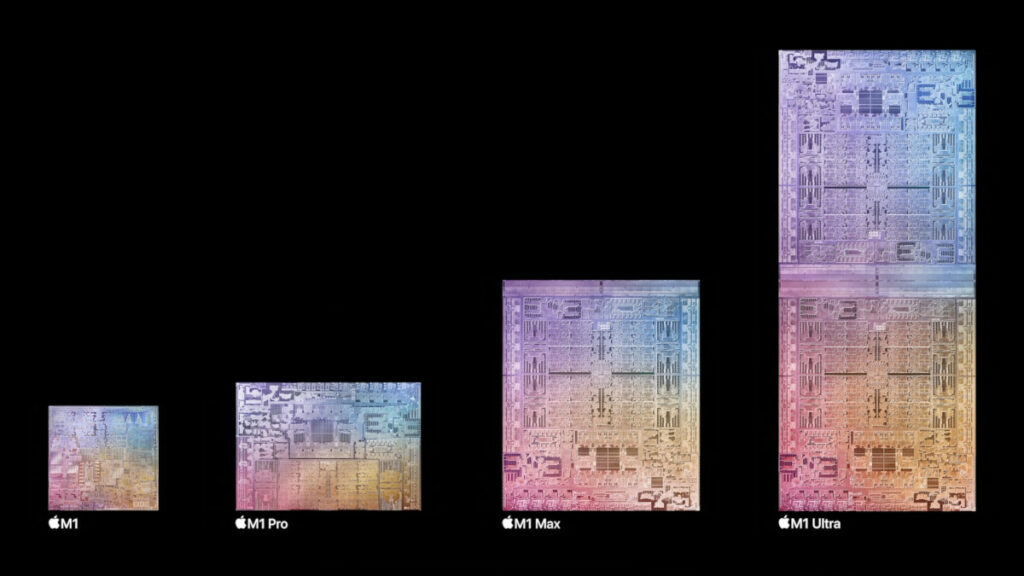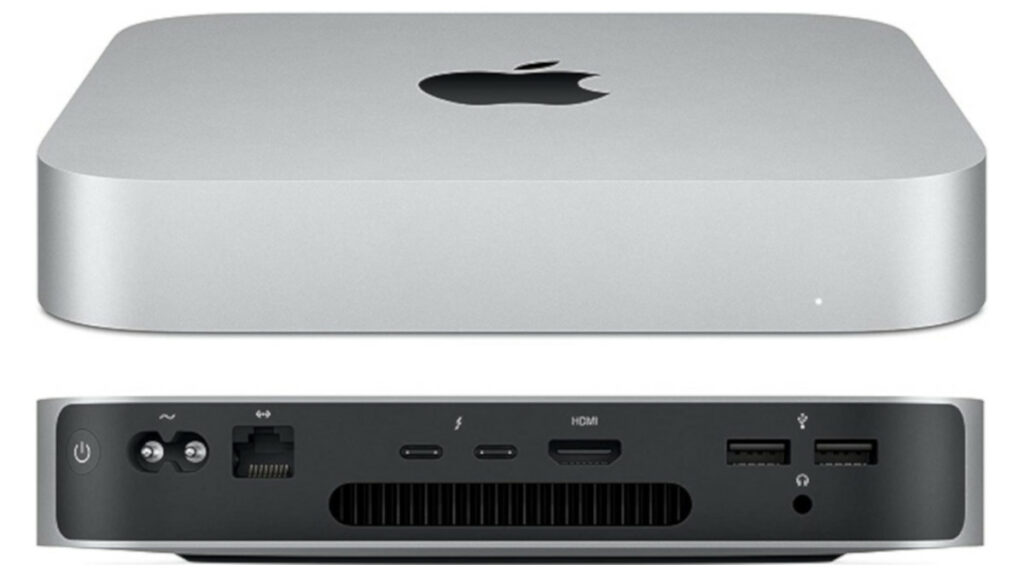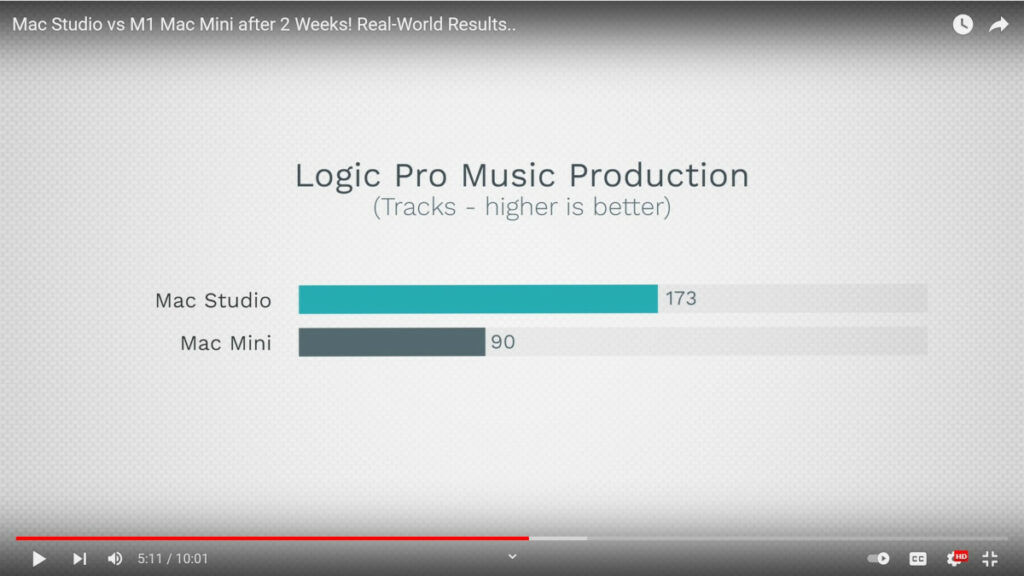Apple M1 Processor Series

Understanding the four Apple M1 Series processors
Apple M1
The M1, Apple’s first system on a chip designed for use in Macs, is manufactured using TSMC’s 5 nm process. Announced on November 10, 2020, it is used in the MacBook Air (M1, 2020), Mac mini (M1, 2020), MacBook Pro (13-inch, M1, 2020), iMac (24-inch, M1, 2021), iPad Pro (5th generation) and iPad Air (5th generation). It comes with 4 performance cores and 4 efficiency cores, for a total of 8 CPU cores. It comes with up to 8 GPU cores, with the entry level MacBook Air having only 7 GPU cores. The M1 has 16 billion transistors.
Apple M1 Pro
The M1 Pro is a more powerful version of the M1, with six to eight performance cores, two efficiency cores, 14 to 16 GPU cores, 16 Neural Engine cores, up to 32 GB unified RAM with up to 200 GB/s memory bandwidth, and more than double the transistors. It was announced on October 18, 2021, and is used in the 14- and 16-inch MacBook Pro. Apple said the CPU performance is about 70% faster than the M1, and that its GPU performance is about double. Apple claims the M1 Pro can deliver up to 20 streams of 4K or 7 streams of 8K ProRes video playback (up from 6 offered by Afterburner card for 2019 Mac Pro).
Apple M1 Max
The M1 Max is a larger version of the M1 Pro chip, with eight performance cores, two efficiency cores, 24 to 32 GPU cores, 16 Neural Engine cores, up to 64 GB unified RAM with up to 400 GB/s memory bandwidth, and more than double the number of transistors. It was announced on October 18, 2021, and is used in the 14- and 16-inch MacBook Pro, as well as the Mac Studio. Apple says it has 57 billion transistors. Apple claims the M1 Max can deliver up to 30 streams of 4K (up from 23 offered by Afterburner card for 2019 Mac Pro) or 7 streams of 8K ProRes video playback.
Apple M1 Ultra
The M1 Ultra consists of two M1 Max dies connected together by a silicon interposer through Apple’s UltraFusion technology. It has 114 billion transistors, 16 performance cores, 4 efficiency cores, 48 to 64 GPU cores and 32 Neural Engine cores; it can be configured with up to 128 GB unified RAM of 800 GB/s memory bandwidth. It was announced on March 8, 2022, as an optional upgrade for the Mac Studio. Apple claims the M1 Ultra can deliver up to 18 streams of 8K ProRes video playback.
Wikipedia
The brilliance of Apple silicon is the components of each one are the same. There are just more or less of them in each type.
* Exception is the M1 does not have the ProRes Encoder/Decoders that the M1 Pro, M1 Max and M1 Ultra have.
The Apple M1 Processor Series are truly game changing processors. By the end of 2023 all Intel based Macs should be history and replaced by M Series processors. As of Q1 2023, the only Apple system with Intel processors still is the Mac Pro.
The M1 processors are Apple custom ARMv8 processors and based on the TSMC 5nm process.
** If you are browsing this page from a phone, you may want to view the following chart in landscape mode.
| Component | M1 | M1 Pro | M1 Max | M1 Ultra |
| Efficiency CPU Cores | 4 | 2 | 2 | 4 |
| Efficiency Clock | 2.1GHz | 2.1GHz | 2.1GHz | 2.1GHz |
| Performance CPU Cores | 4 | 6 or 8 | 8 | 16 |
| Performance Clock | 3.2GHz | 3.2GHz | 3.2GHz | 3.2GHz |
| Neural Engine Cores | 16 | 16 | 16 | 32 |
| GPU Cores | 7 or 8 | 14 or 16 | 24 or 32 | 48 or 64 |
| Unified Memory | 8GB or 16GB | 16GB or 32GB | 32GB or 64GB | 64GB or 128GB |
| Memory Bandwidth | 68.25GB/s | 200GB/s | 400GB/s | 800GB/s |
| Video Decode Engines | 1 | 1 | 1 | 2 |
| Video Encode Engines | 1 | 1 | 2 | 4 |
| ProRes Encode-Decode Engines | 0 | 1 | 2 | 4 |
Assuming a 2 year processor upgrade cycle, by the end of 2023 the M1 Series should be history and fully replaced by the Apple M2 Processor Series in newly released products.
Buying an Apple M1 Series computer
Any Apple M1 Series computer will be a joyful experience compared to music and video production on Intel hardware. If you are a musician or creator, it is highly recommended to get at least 16GB of memory and 512GB storage if you select an M1 system. At the other end of the scale, 64 GPU cores and 128GB of memory will probably not make an appreciable difference for the average musician or creator if you select an M1 Ultra system.
There are 7 basic form factors of Apple macOS systems with M1 Series processors, 3 desktops and 4 laptops.
- MacBook Air 13″
- MacBook Pro 13″
- MacBook Pro 14″
- MacBook Pro 16″
- iMac 24″
- Mac mini
- Mac Studio
Thanks!
-Yehuda
Useful Links
Apple related pages
Updated periodically – Apple Silicon is the DAW standard
Updated periodically – Apple Mac Studio M1 Max & M1 Ultra
Updated periodically – Apple Mac Studio M2 Max & M2 Ultra
Updated periodically – Apple Mac Studio M4 Max & M4 Ultra
Updated periodically – Apple MacBook Pro M1 Pro & M1 Max
Updated periodically – Apple MacBook Pro M2 Pro & M2 Max
Updated periodically – Apple MacBook Pro M3 Pro & M3 Max
Updated periodically – Apple MacBook Pro M4 Pro & M4 Max
Updated periodically – Apple Mac Pro M2 Ultra
Updated periodically – Apple Mac Pro M4 Ultra & M4 Extreme
Updated periodically – Apple Mac mini M1
Updated periodically – Apple Mac mini M2 & M2 Pro
Updated periodically – Apple Mac mini M4 & M4 Pro
Updated periodically – Apple Studio Display
Updated periodically – Apple M1 Processor Series
Updated periodically – Apple M2 Processor Series
Updated periodically – Apple M3 Processor Series
Updated periodically – Apple M4 Processor Series
Follow on Mastodon – TurtleIsland.social/@Yehuda
This page is subject to content updates/additions. If you think any content should be updated or added, please leave a private comment on Mastodon – TurtleIsland.social/@Yehuda.

